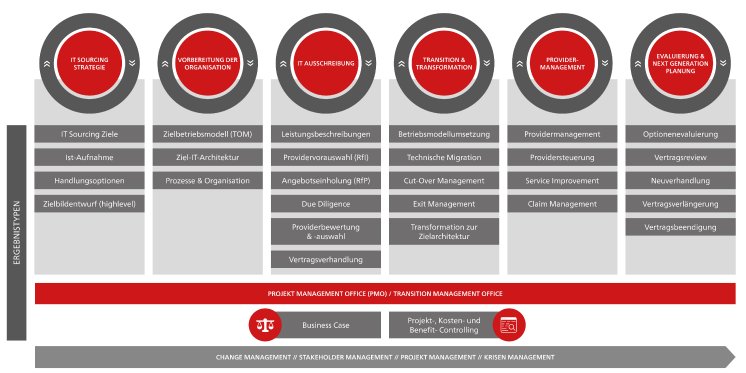IT strategy, sourcing strategy and IT tendering belong together
It sounds like something out of the prayer wheel of IT management consultancies and yet it is true: at the beginning of every major change are the fundamental questions. What is our business purpose? What is the strategic and operational importance of our IT for the business? How is our IT infrastructure set up in concrete terms? What do we want to change? What do we want to do ourselves, what do we want to outsource? Only when this reassurance has been provided in the corporate strategy can an IT tender be set up with hand and foot. Companies that are not tendering for the first time know these requirements and can act with the corresponding experience in concrete tenders. Companies that are involved in a major tendering procedure for the first time often painfully learn how important this basic preparatory work is.
IT tenders are a broad field. Public tenders, restricted or open tenders, tenders for specific work items (e.g. software) or IT processes (e.g. application management), tenders for a complete IT operation or those for smaller units - the framework conditions are as diverse as the goals. What all tenders have in common is the need for good preparation. The tendering company should have a clear idea of what it wants, from the strategy to the selection of providers with whom to enter into negotiations. The negotiation itself and the contract must be considered separately, as they also harbour pitfalls.
IT tenders - the most common mistakes
- Unclear objectives of a sourcing project or tender.
- Defined goals to be achieved through possible outsourcing change over the term of the tender.
- The scope and content are not specifically described by the client.
- The scope of the service package is changed on the route.
- No longlist built? (Insufficient selection of suppliers)
- Different lots are awarded to different providers
- The contracting authority's requirements and the Request for Proposal are not directly described in a contract structure.
- Not all participating service providers have the same framework conditions
- No concrete service levels are defined or the defined service levels do not fit the customer's requirements and are not described with corresponding conditions regarding fulfilment.
- Believing that tendering and outsourcing IT services always saves money
- The tender is structured in such a way that it cannot be profitable for the provider
- Forgotten the legal assessment? In the end, the in-house lawyer speaks as an expert.




